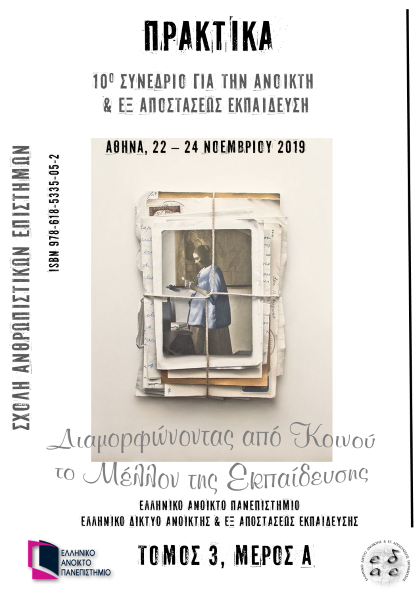Greek as Second Language: Designing tailor made teaching material for teenagers with refugee/migrant background
Περίληψη
The aim of this paper is to describe all faces of designing educational material tailored to the communicative needs of a teenager with refugee/migrant background, in order to assist her/his learning Greek as second language. Hence, this essay has two main parts: In the first part can be found the theoretical background of the importance of the learners’ sociolinguistic profile as a means of identifying their personalized educational needs and the particular role of their parents as an influencing factor, along with the preconditions of an effectively designed educational material for second language learners. In the second part, a particular case is presented: First, the research data of two semistructured interviews and identity texts and the inferred sociolinguistic profile of a 14 year old refugee girl, attending the Reception Class (ZEP I) in a Greek public High School in Athens. Then, the educational material produced for a tailor-made one hour lesson, along with the reasoning of the selected content and language activities. Finally, some generalizing suggestions for further use of this educational research procedure into language teaching towards multi-lingualizing the classroom.
Λεπτομέρειες άρθρου
- Τεύχος
- Τόμ. 10 Αρ. 3A (2019)
- Ενότητα
- Άρθρα



